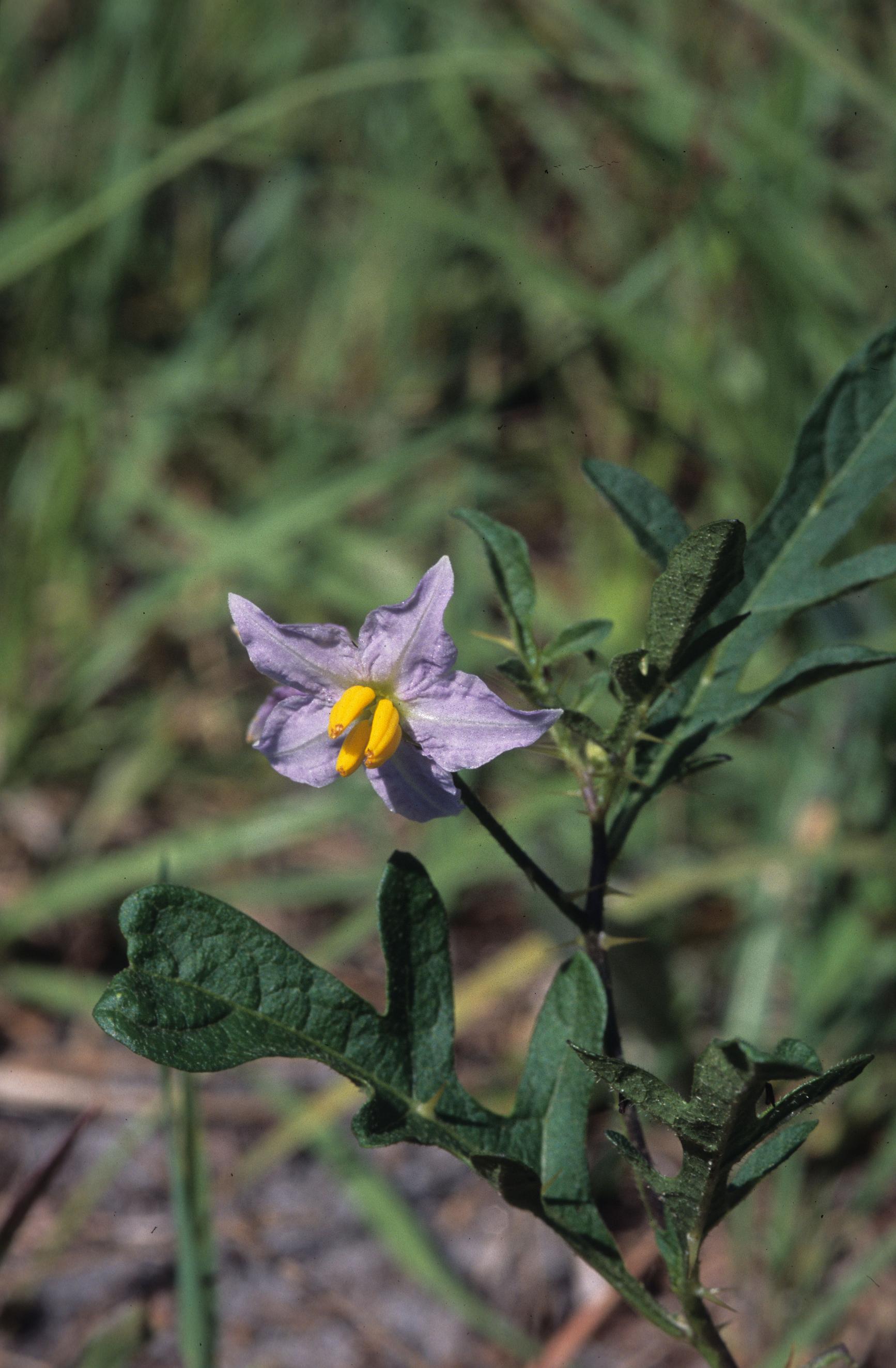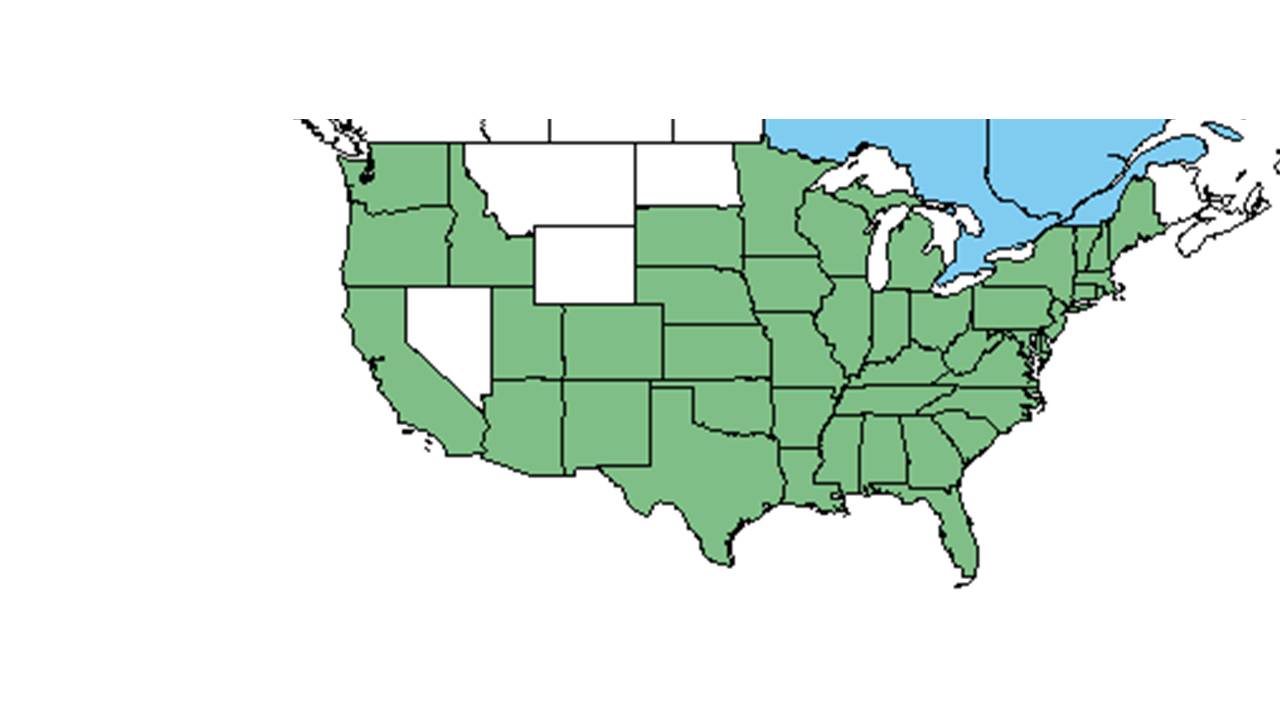Difference between revisions of "Solanum carolinense"
KatieMccoy (talk | contribs) |
KatieMccoy (talk | contribs) |
||
| Line 26: | Line 26: | ||
==Ecology== | ==Ecology== | ||
===Habitat=== <!--Natural communities, human disturbed habitats, topography, hydrology, soils, light, fire regime requirements for removal of competition, etc.--> | ===Habitat=== <!--Natural communities, human disturbed habitats, topography, hydrology, soils, light, fire regime requirements for removal of competition, etc.--> | ||
| − | + | ||
| − | It can | + | ''S. carolinense'' can be found in pinelands, floodplains, floodplain clearings, pine-oak woods, upland oak-hikory forests, grassy turf of berms, pine-palmetto flatwoods, wet hammocks, deciduous woodlands, river banks, bordering marshes, and seasonally wet depressions within thickets (FSU Herbarium). It can also occur at boat landings, roadsides, shrubby lake margins, cultivated watermelon fields, under bridges, roadside depressions, cultivated flower beds, powerline corridors, old fields, along hiking trails, disturbed slash pine woodlands, and cowpea fields. |
| − | + | ||
| + | Associated species include ''Richardia scabra, Croton glandulosus, Ambrosia artemisifolia, Datura stramonium, Phytolacca, Amaranthus, Cyperus, Passiflora, Rubus, Ilex, Baccharis, Myrica'', horsemint, morning glory, and evening primrose (FSU Herbarium). | ||
| + | |||
| + | |||
| + | Soils include sandy soils, limestone, sandy loam, loamy sand, alluvial sands, black organic clay (FSU Herbarium) and calcareous soils (Engle et al. 2000) | ||
| + | |||
===Phenology=== <!--Timing off flowering, fruiting, seed dispersal, and environmental triggers. Cite PanFlora website if appropriate: http://www.gilnelson.com/PanFlora/ --> | ===Phenology=== <!--Timing off flowering, fruiting, seed dispersal, and environmental triggers. Cite PanFlora website if appropriate: http://www.gilnelson.com/PanFlora/ --> | ||
===Seed dispersal=== | ===Seed dispersal=== | ||
Revision as of 14:19, 7 October 2015
| Solanum carolinense | |
|---|---|

| |
| Photo was taken by Gil Nelson | |
| Scientific classification | |
| Kingdom: | Plantae |
| Division: | Magnoliophyta – Flowering plants |
| Class: | Magnoliopsida – Dicotyledons |
| Order: | Solanales |
| Family: | Solanaceae |
| Genus: | Solanum |
| Species: | S. carolinense |
| Binomial name | |
| Solanum carolinense L. | |

| |
| Natural range of Solanum carolinense from USDA NRCS Plants Database. | |
Common name: Carolina horsenettle
Contents
Taxonomic notes
Description
Distribution
Ecology
Habitat
S. carolinense can be found in pinelands, floodplains, floodplain clearings, pine-oak woods, upland oak-hikory forests, grassy turf of berms, pine-palmetto flatwoods, wet hammocks, deciduous woodlands, river banks, bordering marshes, and seasonally wet depressions within thickets (FSU Herbarium). It can also occur at boat landings, roadsides, shrubby lake margins, cultivated watermelon fields, under bridges, roadside depressions, cultivated flower beds, powerline corridors, old fields, along hiking trails, disturbed slash pine woodlands, and cowpea fields.
Associated species include Richardia scabra, Croton glandulosus, Ambrosia artemisifolia, Datura stramonium, Phytolacca, Amaranthus, Cyperus, Passiflora, Rubus, Ilex, Baccharis, Myrica, horsemint, morning glory, and evening primrose (FSU Herbarium).
Soils include sandy soils, limestone, sandy loam, loamy sand, alluvial sands, black organic clay (FSU Herbarium) and calcareous soils (Engle et al. 2000)
Phenology
Seed dispersal
Seed bank and germination
Fire ecology
Pollination
Use by animals
It is an important summer food for bobwhites (Jones and Chamberlain 2004).
Diseases and parasites
Conservation and Management
Cultivation and restoration
Photo Gallery
References and notes
Engle, D. M., M. W. Palmer, et al. (2000). "Influence of late season fire on early successional vegetation of an Oklahoma prairie." Journal of Vegetation Science 11: 135-144.
Jones, J. D. J. and M. J. Chamberlain (2004). "Efficacy of herbicides and fire to improve vegetative conditions for northern bobwhites in mature pine forests." Wildlife Society Bulletin 32: 1077-1084.
Madison, L. A., T. G. Barnes, et al. (2001). "Effectiveness of fire, disking, and herbicide to renovate tall fescue fields to northern bobwhite habitat." Wildlife Society Bulletin 29: 706-712.
Squiers, E. R. (1989). "The effects of seasonal timing of disturbance on species composition in a first-year oldfield." Bulletin of the Torrey Botanical Club 116: 356-363.